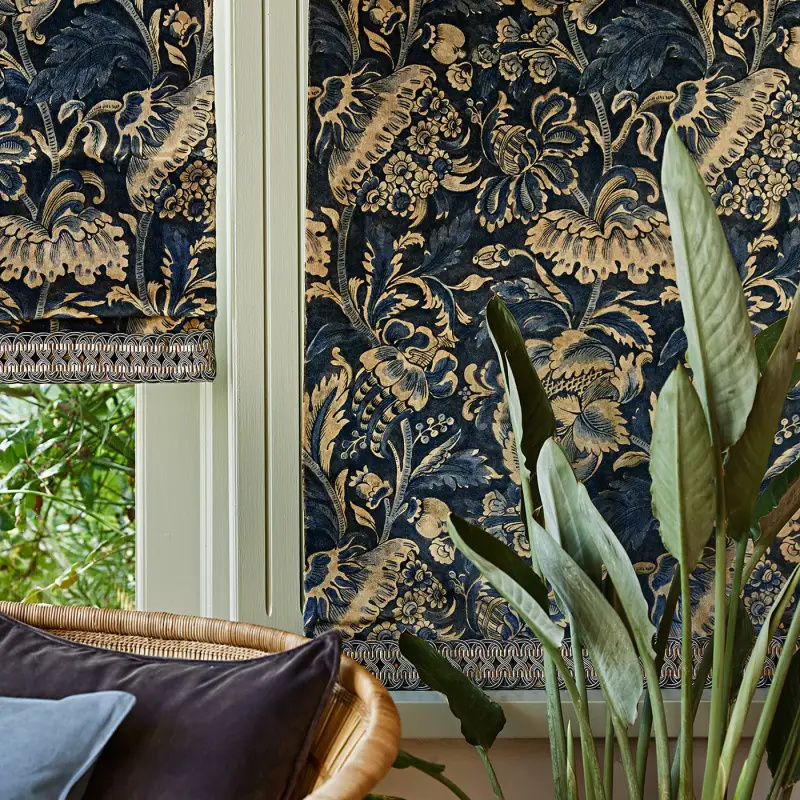Unravelling the intricate threads of design, colour, and texture, the world of fabrics weaves stories that go beyond the surface. In the realm of design, each pattern tells a tale—a narrative that is as rich and captivating as the threads themselves.
Whether you’re an avid design enthusiast, a storyteller at heart, or simply someone who appreciates the interplay of art and textiles, this exploration promises to inspire a new appreciation for the narratives that drape our world in beauty and meaning.
The importance of storytelling in design
The significance of storytelling becomes pronounced as it empowers designers to fashion materials into captivating narratives. Designer fabric, adorned with patterns and hues, holds the power to evoke emotions, transport individuals across epochs, and encapsulate the essence of civilizations and histories.
Each fabric design takes on a distinctive narrative, serving as a potent medium through which creativity finds expression and ideas materialise. Beyond its visual allure, design storytelling serves as a conduit for designers to convey concepts and tales that resonate with their audience, transcending the limitations of language.
It crafts a sensory experience, engaging not only the eyes but also other senses, like touch and emotion. The resulting creations – be it apparel, furnishings, or accessories – carry a profound significance by infusing materials with stories that run deep.
The fusion of storytelling and design within the realm of textiles stands as a testament to the ingenuity of the human mind. It bestows the ability to articulate personal identity, communicate narratives, and forge profound connections with others.
In moments of quiet contemplation, one is encouraged to pause and appreciate the narrative concealed within meticulously crafted fabrics. This appreciation extends to the imaginative designers who wield storytelling as a tool to infuse vitality into their works, inviting viewers to embrace the symphony of creativity and expression that binds humanity together.
Different storytelling techniques used in designer fabrics
Symbolism is one approach utilised in designing fabrics. Symbols with substantial meaning or cultural significance are incorporated into designs by designers. These symbols can symbolise thoughts, beliefs, or feelings, allowing the fabric to communicate without the use of words. A cloth with a design of birds flying, for example, might represent freedom and liberty.
The usage of themes is another strategy. Motifs are recurring patterns or motifs in cloth that may provide a feeling of rhythm and coherence. They can also add to the fabric’s overall story. A cloth with a recurring floral theme, for example, might elicit sentiments of beauty and nature.
Patterns in design have a special capacity to elicit emotions. Designers may utilise shapes, colours, and textures to create a mood that connects with people. They can convey sentiments of peace, joy, tranquillity, or even discomfort.
Patterns have an emotional impact that extends beyond appearance. They have the potential to influence how users understand and engage with a design. Colours and forms are important in eliciting specific emotional reactions from consumers. Warm colours like red and orange, for example, elicit arousal or enthusiasm, whereas cool colours like blue and green elicit tranquillity or serenity.
Conclusion
The elaborate patterns and motifs that cover these textiles tell stories that span civilizations, histories, and emotions, enabling people to immerse themselves in a rich tapestry of human expression.
Each fabric, like a master storyteller, invites the reader to trail their fingertips over the curves of its pattern, unveiling the stories it contains. The colour symphony, theme rhythm, and texture beneath one’s touch all work together to present an expressive image of legacy and creativity.
When these materials are used to decorate one’s surroundings or clothing, they become a part of a larger narrative, an interrelated story that transcends time and location. These textiles become the threads that connect people to a global society in which creativity, culture, and personal identity coexist.
So, as the journey through the world of designer fabrics concludes, one is left with an invitation—to continue exploring the stories these patterns tell, to appreciate the craftsmanship and creativity that goes into each piece, and to carry the spirit of pattern storytelling with them in every aspect of life.
Photo by Maite Oñate on Unsplash



